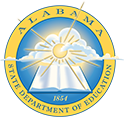This video, adapted from material provided by the ECHO partners, presents a telling of the Tlingit myth, "How Raven Gave Light to the World." The story is told by Shirley Kendall (Eagle Moiety), originally from the Alaskan village of Hoonah. It is illustrated with a video of Native dancers and Alaskan scenery, as well as with images depicting Raven.
This resource provides students with the opportunity to analyze stories an myths from diverse cultures.
